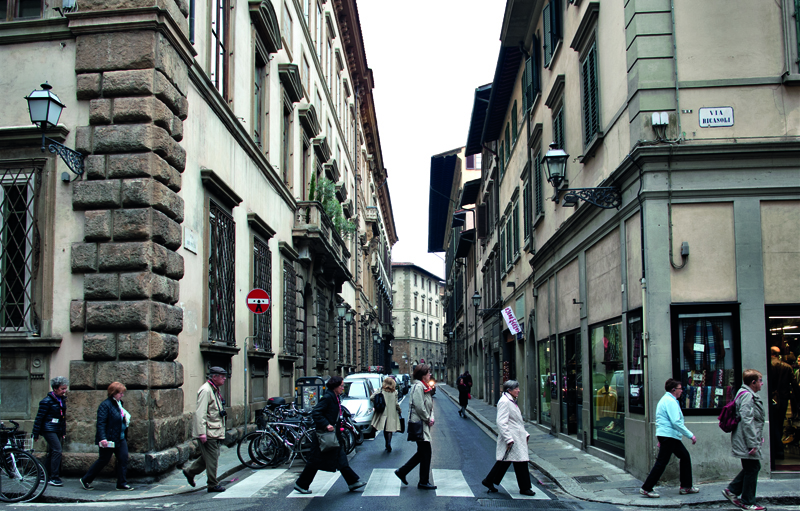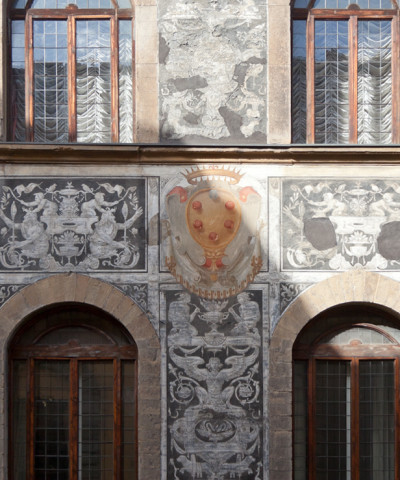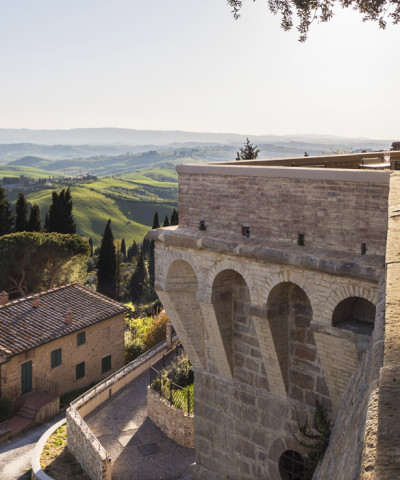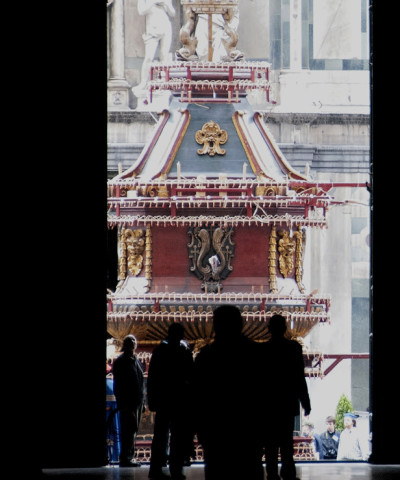San Lorenzo. The most Pop district in Florence
Discover with us the wonderful world of Florence
Italo Calvino wrote, “The city does not tell its past, but contains it like the lines of a hand, written in the corners of the streets, the gratings of the windows, the banisters of the steps, the antennae of the lightning rods, the poles of the flags, every segment marked in turn with scratches, indentations, scrolls.”
San Lorenzo is all this and more: you can breathe it every corner, even the hidden ones. A medley of faces and cultures, flavours and fragrances lend a contemporary feel to the renaissance aura that tells of its Medici heritage that you can see everywhere: in the history, beauty, nobility and elegant aura of the place. On leaving Piazza Santa Maria del Fiore, a gentle stroll will take you into Via de’ Martelli and right away, into the heart of the neighbourhood: Piazza San Lorenzo.
At first glance, the sight before us seems to stretch in apparently distant directions. Up close and dominating the cityscape, is the Cappella dei Principi (Princes’ Chapel), second only to the taller cathedral dome. A large flight of steps beckons us to enter one of the oldest, most beautiful basilicas in Florence, the Basilica di San Lorenzo (Saint Lawrence Basilica). Let’s have a look inside. Giovanni di Bicci, head of the Medici family, entrusted the rebuilding of the ancient basilica, which was originally consecrated in 393 - the earliest church in Florence - to Filippo Brunelleschi, who directed the project until his death. It is a masterpiece of melodiously vast proportions with a sense of perfect, enchanting harmony. A visit to the Old Sacristy is a must.
This 15th century masterpiece was the first part of San Lorenzo that Brunelleschi worked on as part of the Medici commission; the dynasty wanted it as their mausoleum. The restrained simplicity of the space sets off Donatello’s coloured stucco decorative work wonderfully. To the back of the church, leading into Piazza Madonna degli Aldobrandini, is the wonderful Princes’ Chapel, a true emblem of the Medici’s self-celebration. Lift your gaze upwards and revel in the extravagant, breathtaking surroundings. A hardstone workshop, the Opificio delle Pietre Dure, was set up specially to prepare the precious stones, mother-of-pearl, lapis lazuli and coral used to decorate the interior surfaces.
The second spectacular sight in the Medici chapels complex is the New Sacristy. Built by Michelangelo in phases between 1521 and 1534, the sacristy is entered by a corridor from the Princes’ Chapel. Giuliano de’ Medici is portrayed in a proud pose and on his tomb Michelangelo chose to represent Day and Night; Lorenzo is shown in a melancholic and reflective pose and on his tomb are Dusk and Dawn. Both statues look towards the centre of the chapel where the Virgin Mary holding baby Jesus appears, almost by miracle.
Moving into the final marvellous Medici creation in the large San Lorenzo complex, we come to the Biblioteca Laurenziana (Laurentian Library). Everything is original here, from the limewood ceiling engraved by Giovan Battista del Tasso, to the marvellous windows with Medici crests designed by Giorgio Vasari and the beautiful red and white terracotta floor designed by Niccolò Tribolo. The wooden tables running down both sides of the hall were made to Michelangelo’s drawings. San Lorenzo is more than just an example of the eternal splendour of Medici patronage.
There is another wonder to behold here, a treasure that encapsulates a large part of our tradition, and it’s called the San Lorenzo Market. A word of advice before you venture into this gourmet heaven: have all your senses at the ready, look at the faces, listen to the blaring voices of the stallholders, savour the wholesome smells of yesteryear. The large Art Nouveau building designed by Giuseppe Mengoni (the same architect behind the Galleria Vittorio Emanuele in Milan) is formed of two floors and two philosophies, the two intricately linked by a spirit of good taste and quality. The ground floor houses the traditional food market, with stalls selling cheeses, meats, fish, cured pork products, fruit, vegetables, flowers, spices and dried fruit. Any special tips? Bacci Manuele for poultry, Piero Soderi for steak, the Nuova Tripperia Fiorentina for tripe, Ultima Spiaggia , Barabino and Massimiliano Giani for fish, and Conti e Fratelli Boni for fruit and vegetables. The real gem, though, is the first floor, the contemporary soul of the building and place where foodie culture fuses with pure and simple excellence. Welcome to the Mercato Centrale (Central Market).
Among Italy’s most stunning markets, San Lorenzo has been a regular stopping-point in European food and wine tours for the past two years. It is the result of a singular, all-Italian project masterminded by Umberto Montano who transformed the first floor of the 19th century Mercato Centrale into 3000 square metres of outstanding space with seating for 500, 14 shops, a restaurant, pizzeria, alehouse, cafe, cookery school, wine academy, and a bookshop.
Every day from 10 am to midnight, you can wander through, have something to eat, do some shopping, and have your purchases delivered to your home within three hours or shipped worldwide. “A giant mixing pot and medley of flavours, where two identities - past and present - come together,” Mercato Centrale founder Umberto Montano told us. “If I had to sum up what Mercato Centrale is, I’d liken it to a meeting place. It’s a space that breathes beauty, culture and art, an exhilarating experience that transcends the simple act of buying or eating something. Our approach to food is shaped by a very rigorous and authentic philosophy.
Every single thing you can eat at the Mercato Centrale is, as a matter of principle, wholesome, healthy and delicious. All foods are prepared in the simplest of ways, and the supply chain is 100% guaranteed, given that the artisans of taste make the products then sell them at moderate prices.” Another reason to visit the Mercato Centrale? Michelangelo Pistoletto’s “Il Terzo Paradiso” (The Third Paradise) installation. The artist’s incredible art on windows throughout the building, whereby 1,100 square metres are dressed in colour, creates a dreamlike journey into contemporary art.
But it doesn’t finish here. If you have a day to spend in the neighbourhood, then there are more gems to add to your to-do list: an Andreina breakfast in the Antica Pasticceria Sieni pastry shop; the true spirit of Florentine cuisine at Trattoria da Mario and Trattoria Sergio Gozzi; the style and contemporary spirit of Konnubio, an inventive, culinary space led by chef Beatrice Segoni and open from breakfast till late.
Need a restaurant, bistro, florist, cocktail bar and boutique? La Ménagère is the place to go. Breakfast with a massage? Try Hotel & Spa Firenze Number Nine, which is also excellent for pre-dinner cocktails and canapés. On the retail therapy front, here are some style tips to get some of the district’s boho-chic vibe: the highly sought-after vintage pieces at Desii Vintage and UB, Paolo Penko’s goldsmith shop in Via Zannetti and Maselli’s craft-made picture frames. Oh, almost forgot. For a gourmet lampredotto (tripe) sandwich hop over to Lupin e Margo in Via dell’Ariento, the only female tripe-maker in the whole of Florence!












